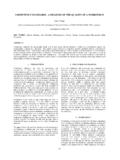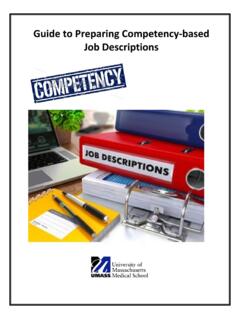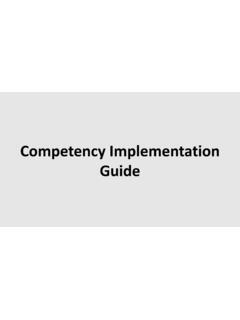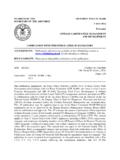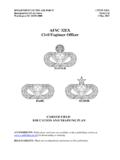Transcription of Universal Design for Learning: Guiding Principles to Reduce …
1 E. Dalton / Journal of Media Literacy Education 2017 9 (2), 17 29 17 Available online at The National Association for Media Literacy Education s Journal of Media Literacy Education 9 (2), 17 - 29 Beyond Universal Design for Learning: Guiding Principles to Reduce Barriers to Digital & Media Literacy Competence Elizabeth M. Dalton University of Rhode Island Abstract Universal Design for Learning (UDL), a framework for designing instruction to address the wide range of learner variation in today s inclusive classrooms, can be applied effectively to broaden access, understanding, and engagement in digital and media literacy learning for ALL. UDL supports constructivist learning Principles . UDL strategies and methods encourage development of expert learners though personal engagement and motivation.
2 UDL transforms one-size-fits-all instruction into diverse, multiple, and accessible learning opportunities that embrace student variation. UDL Principles and guidelines offer a unique way for educators in digital and media literacy fields to ensure that their work will benefit the widest range of learners, including those with learning challenges and disabilities. Keywords: Universal Design for Learning, access, accessibility, technology, digital literacy, media literacy It is important for all students to develop and grow as informed and reflective participants in our democratic society. To do so, all learners need not only access to content and information, but also engagement and connection to what they are learning. Development of digital and media literacy provides students with tools and contexts to better understand and personalize their connections to culture, society, and the democratic process, which often leads to greater effort and persistence in learning.
3 As individual skills, beliefs, and experiences are challenged or affirmed by connecting to information through digital and other media sources, learners become more self-aware, expand their E. Dalton / Journal of Media Literacy Education 2017 9 (2), 17 29 18 epistemic cognition, and become better able to self-regulate their own learning (Greene, Yu, & Copeland, 2014). My interest in curriculum Design started when I pursued further education through an individualized program in special education and curriculum development. Having already worked as a special education teacher for five years in RI public schools, I found that many more options were needed in the pathways, approaches, methods, and materials used to vary curriculum and instruction for diverse students and their teachers.
4 This interest led to several professional paths: an exploration into the powers of assistive technology, and later to post-doctoral studies at the Center for Applied Special Technology (CAST) and Boston College. To expand the reach of technology supports in education, I co-founded the TechACCESS Center of RI, a state and regional center for assistive technology services to persons of all ages. Additionally, I have served as board member and president of the Inclusive Learning Network of ISTE, a professional learning network focused on effective educational and assistive technologies for those with differing needs. The power of technology and Universal Design for Learning (UDL) to inform varied curriculum Design and development has important implications on equity issues in digital and media literacy.
5 By expanding our view of literacy to include all forms of media, options for educators to represent what they are teaching and how students show what they have learned are broadened enormously. Considering and integrating the UDL curriculum Design framework with the fields of digital and media literacy will ensure that learning environments and materials are accessible and engaging for all students. This article introduces the history, Principles and rationale for UDL and makes specific connections between UDL Principles and digital and media literacy essential competencies (Hobbs, 2010). Exemplifying the role digital and media literacy can play in the implementation of UDL to expand the capabilities of our students in today s society.
6 What is UDL? Describe the typical classroom. Who is the typical learner? What does a typical learning environment look like? If you have difficulty responding, there are some very good reasons: the word typical is synonymous with terms like average, regular, standard, and normal. Who is the average student? What is normal? When we try to picture what a standard or regular classroom looks like, it is an impossible task. While the concept of standard may exist statistically, it does not exist in the reality of the classroom or other learning environments. Every student is a unique individual with different characteristics, preferences, abilities, and beliefs that deserve consideration when designing curricula and instruction. Data and statistics can be standardized, but people cannot.
7 Variation, rather than standardization, is the true reality of our students and it needs to be our educational reality. David Rose, one of the originators of UDL and chief education officer of the Center for Applied Special Technology (CAST) states .. In many classrooms, the focus is on an illusory average student. Many curricula are designed for that student. Cognitive neuroscience has E. Dalton / Journal of Media Literacy Education 2017 9 (2), 17 29 19 shown us that there really isn't an average student anywhere, and that's why it's an illusory student (CAST, 2014). By recognizing the reality of learner variability, and building this variation into the Design of instruction and curriculum, educators can address learners varied needs and capabilities effectively.
8 This concept is at the heart of the UDL conceptual framework. Research in cognitive science and neuroscience shaped the development of UDL. Understanding how we learn through memory, language processing, perception, thinking, and problem solving is central for the effective consideration of learner variability. Research identifies three neural functions involved in cognition: a) pattern recognition, b) pattern planning and generation, and c) pattern determination of importance (Rose & Strangman, 2007). Three specific learning components significantly impact the performance of these functions: a) recognition of information to be learned, b) application of strategies to process the information, and c) engagement in the learning task (Vygotsky, 1962). CAST, which served originally as a technical support center for students with special needs in Massachusetts was seeking a different path to support students growth and development, one based on capitalizing students strengths, rather than primarily remediating weaknesses.
9 Vygotsky s work, and others, served as the foundation for CAST s development of the conceptual framework of UDL (Meyer & Rose, 1998; Orkwis & McLane, 1998; Rose & Meyer, 2002). Inspired by the earlier architectural concept of Universal Design (UD) of physical environments originally developed by the late Ron Mace (Center for Universal Design , 1997), the UDL framework for curriculum Design is based on the three primary brain networks of recognition, strategy, and affect. These networks account for the broad diversity of individual learning styles, and closely correlate with the work of Vygotsky. The three core Principles of UDL were developed from this foundation. The core Principles of UDL CAST s research on the neurological basis of learning styles, in combination with its practical work with learners who had widely varying needs, eventually yielded the three core Principles of UDL (Hall, Strangman, & Meyer, 2003).
10 These three Principles are: 1. Multiple Means of Representation (the HOW of learning) To address varied learner capabilities and needs, multiple and flexible methods of presentation of content and information are used to support recognition learning. For example, teachers can present the learning materials through a variety of media (visual, auditory, or tactile), and provide multiple examples that can be modified in complexity to meet a range of learning needs. 2. Multiple Means of Action and Expression (the WHAT of learning) To address varied learner capabilities and needs, multiple and flexible methods of action and expression of students learning are incorporated into instruction to support strategic learning. Teachers can use strategies that allow the learner to practice tasks with different E.










